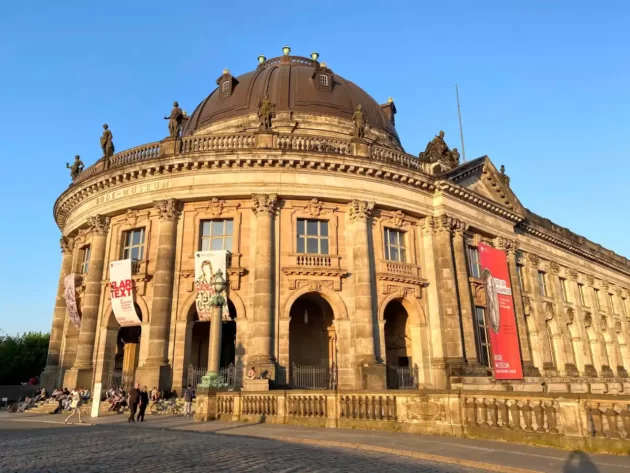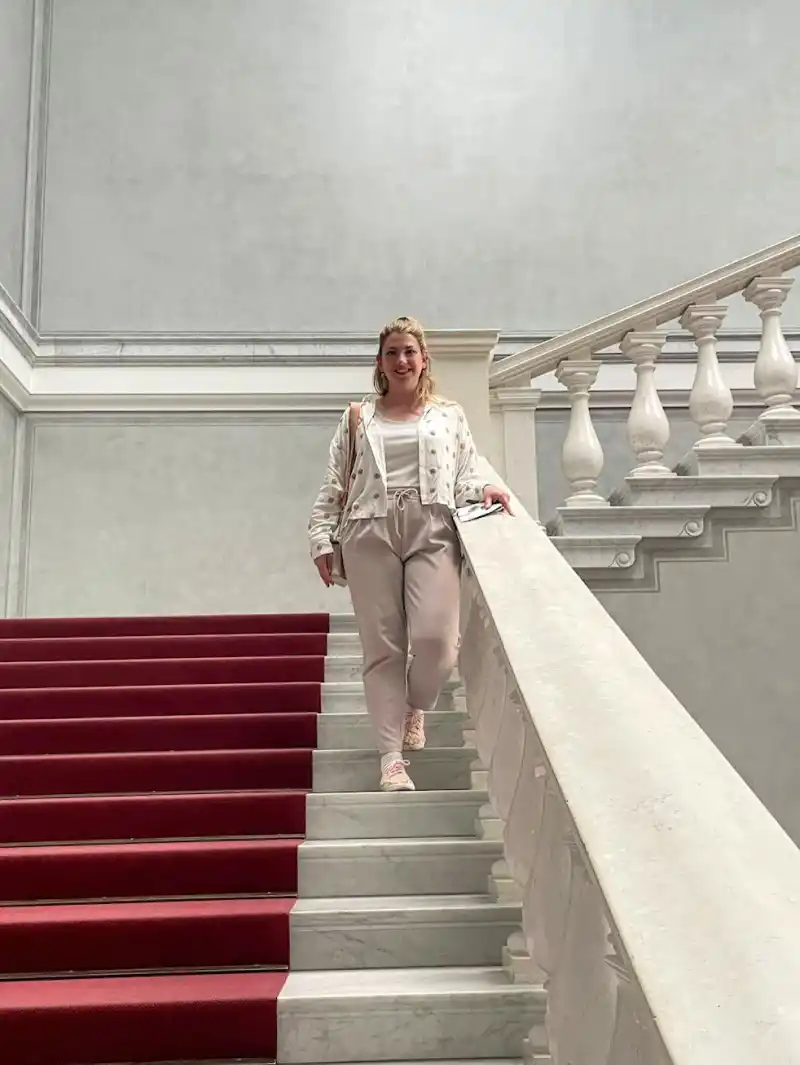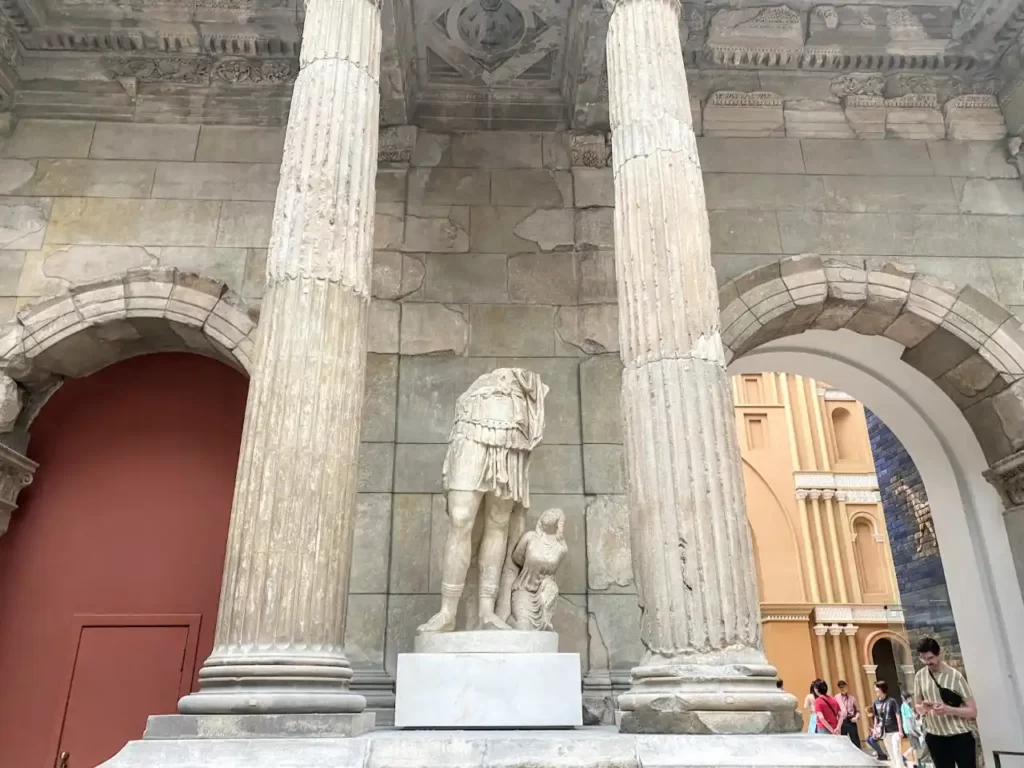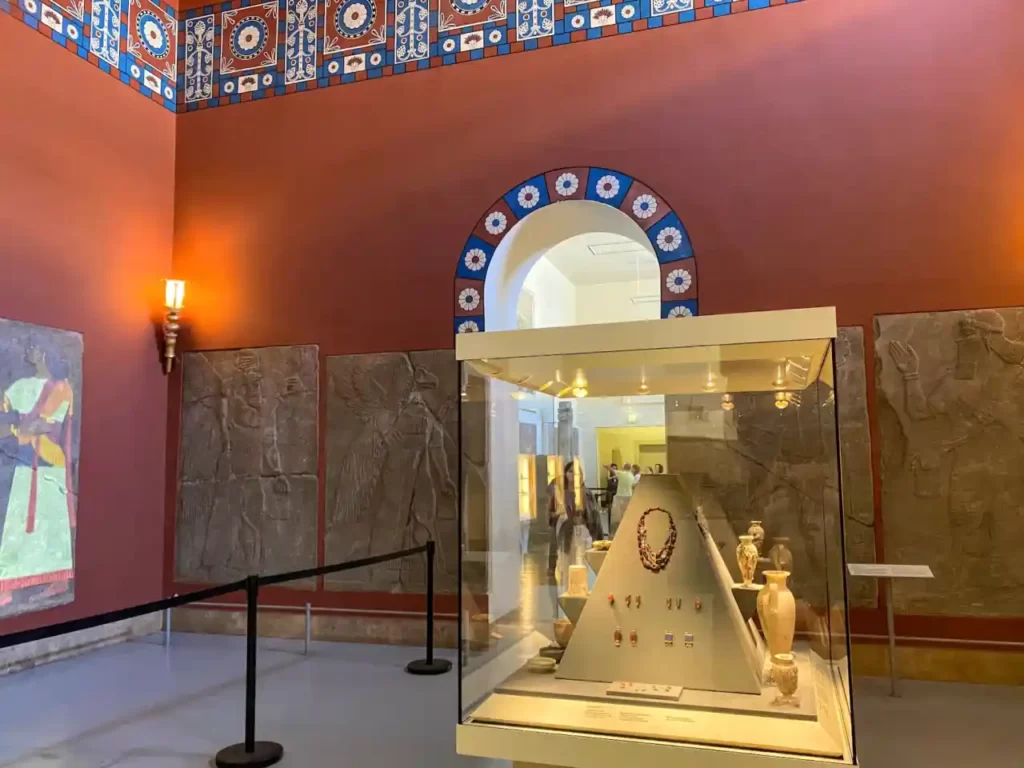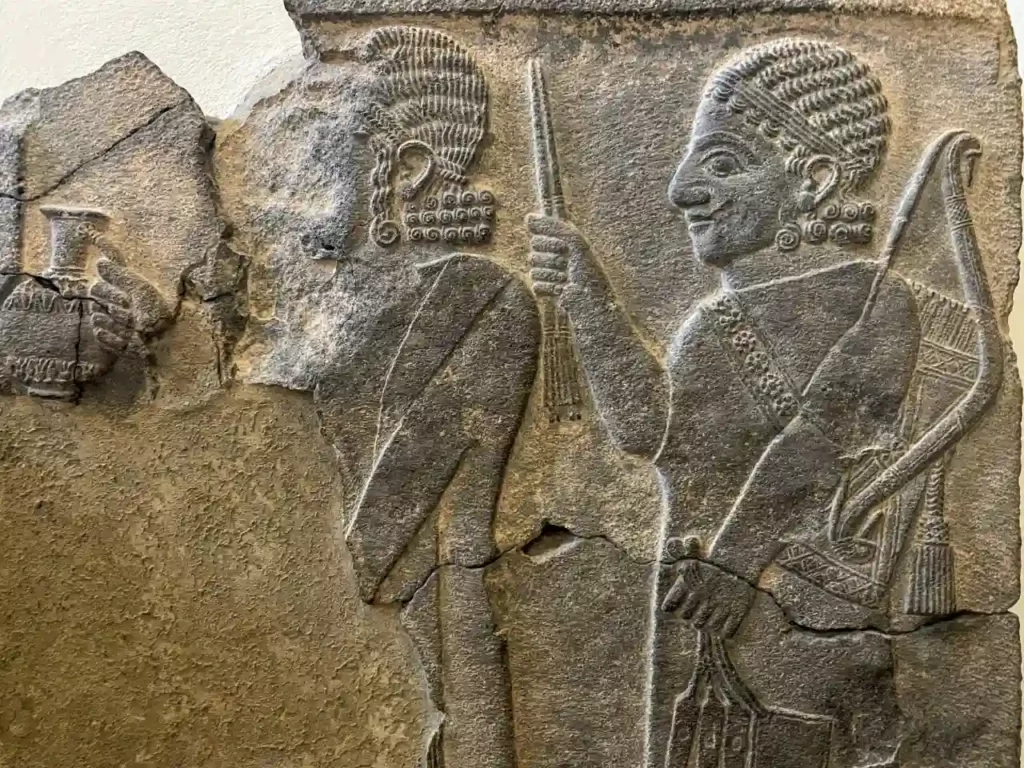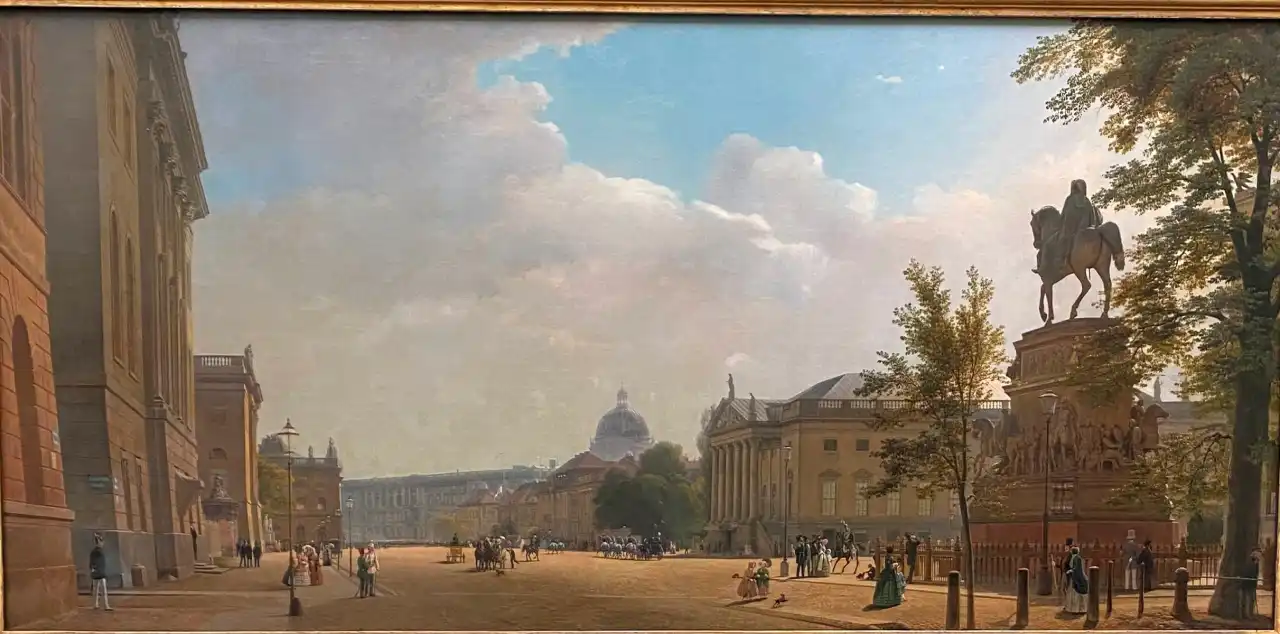Museum Island Berlin is one of the most fascinating cultural sites in Europe. It comprises of five world-class museums, and the whole complex is regarded as a UNESCO World Heritage Site. The island dedicated to art and culture is one of the most visited places in Berlin. You can read here about its history, museums and tips for visiting Museum Island Berlin.
Museum Island Berlin
This post contains some affiliate links. Read our Privacy Policy for more info.
Situated on the River Spree island, Museum Island Berlin is located in the heart of the city. The museums were built between 1830 and 1930 with the idea of showing the royal art collection to the public. Its collection was enlarged later with donations, art purchases and archaeological excavations. The museums’ construction was initiated by the Prussian Kings. The site got its current name, Museum Island Berlin, in the 1870s.
The whole site is fascinating because you can feel the idea of establishing the first museums while wandering around it. Buildings are clearly influenced by the Classical styles. However, with its massive project of renewing Museum Island, it will be even more fantastic in the future.
⤷ Read more: 3 Days in Berlin Itinerary
Which museums are on Museum Island in Berlin
Museum Island Berlin is home to five museums built during the period of 100 years. They houses different collections, so you can choose which one you’d like to visit based on that.
Altes Museum
Altes Museum, or the Old Museum, was the first museum built on the site in 1830. Inspired by Greek architecture, the Neo-Classical architectural design was made by Karl Friedrich Schinkel.
The original idea was for the museum to host the fine arts collection, including the Old Masters paintings and drawings. However, since the beginning of the 20th century, the museum has been home to the Collection of Classical Antiquities. You’ll find Greek, Etruscan and Roman sculpture, jewellery, vases and coins in the museum’s collection. The ground floor is where the permanent collection is displayed. While the first floor is reserved for temporary exhibitions.
⤷ Read more: 20 Archaeological sites you have to visit in Europe
Neues Museum
The construction of the Neues Museum, or the New Museum, was finished by 1855. It was made by the designs of Friedrich August Stüler, who was K. F. Schinkel’s student. The building is essential for architectural history because it was one of the first museum buildings using iron construction and new industrial technologies. The building was erected on 2344 wooden piles keeping the construction firm because of the soft river soil the museum was built on.
Neues Museum was utterly destroyed during the Second World War. Its reconstruction began in 1999 and was finished in 2009 under the leadership of a famous British architect, David Chipperfield.
Today, this institution is home to the Egyptian Museum and Papyrus Collection, the Museum of Prehistory and Early History and the Collection of Classical Antiquities. Its most famous highlight is Nefertiti’s bust, which is over 3000 years old.
Alte Nationalgalerie
Alte Nationalgalerie, or the Old National Gallery, was built between 1862 and 1876. Its design was inspired by the Greek temple. On the top of the staircase in front of the building is the memorial to Frederick William IV, who initiated its construction. The interior staircase is decorated with a frieze by Otto Geyer depicting German history.
The basis of its collection of 262 paintings made by German and foreign painters donated by a banker Johann Heinrich Wagener. The museum houses paintings and sculptures from Classicism, Romanticism, Biedermeier, Impressionism and the early Modern Age. Among its highlights are paintings by Caspar David Friedrich, Karl Friedrich Schinkel, Adolph von Menzel, Max Liebermann, etc. It’s also home to a collection of French Impressionism containing works by Edouard Manet and Claude Monet.
⤷ Read more: 15 Best exhibitions in European museums in 2023
Bode Museum
First known as Kaiser Friedrich Museum, Bode Museum opened its doors in 1904. The museum was renamed in the 1950s in honour of its first curator, Wilhelm von Bode. Its architecture follows the shape of the tip of the island on which it’s situated. Built in the Baroque Revival style, it’s one of the most fascinating buildings in Berlin.
The museum is home to one of the best and most extensive sculpture collections in European museums. The statues on display were made from the Middle Ages until the 19th century. It houses the Museum of Byzantine Art and the Numismatic Collection, too. Displayed are also artworks from Berlin’s Picture Gallery.
In 2017, a Canadian gold coin called the Big Maple Leaf was stolen from the museum. Although its thefts were soon arrested, the coin was never restored, and its believed that it had been melted.
⤷ Read more: The most intriguing art heists in European museums
Pergamon Museum
The last museum to be opened on the Museum Island Berlin is Pergamon Museum, finished in 1930. This fascinating place is the most visited museum in Berlin today.
It houses the Collection of Classical Antiquities, the Museum of the Ancient Near East and the Museum of Islamic Art.
Pergamon Museum is unique because it displays large reconstructed architectural parts helping visitors feel how they looked. One of the museum highlights is the Babylonian Ishtar Gate, decorated with vibrant blue tiles and images of lions, dragons and other animals. Similar architectural exhibits are the Roman Pergamon Altar, after which the museum was named, and the Market Gate of Miletus.
Besides those, it’s also home to archaeological artefacts from ancient Babylon, Uruk, Assur, Miletus, Priene and ancient Egypt. Its collection of Islamic art located on the museum’s first floor is incredibly fascinating.
⤷ TIP: The Pergamon Museum will close its doors on 23 October 2023 for extensive renovation work until 2027. Be sure to see it before that, or plan to go to some other museums if you’ll visit Museum Island Berlin after that.
James Simon Gallery
James Simon Gallery is a visitors centre and joined Museum Island designed by David Chipperfield and opened in 2019. It serves as an entrance gallery connected with Pergamon, Neues, Altes and Bode Museums through the archaeological passages.
It was named after Henri James Simon (1851 – 1932), who donated his collection to the museums on the Museum Island Berlin and helped them become world-known. One of the most famous masterpieces from his private collection is the bust of Nefertiti you can see at the Neues Museum.
The building’s contemporary interpretation of Classical architecture makes James Simon Gallery fits perfectly on Museum Island.
How to get to Museum Island Berlin
The Museum Island Berlin is located in the city centre and is easily reachable from anywhere in Berlin. Underground lines U5 and U6 will take you to it. You can also reach it using the S-Bahn lines S1, S2, S25, S5, S7 and S75. You can exit at the S-Bahn stop Hackescher Markt.
⤷ Read more: Most beautiful museum cafes in Europe
Museum Island Berlin tickets
You can visit individual museums on the island or decide to see a few of them. You should purchase your entrance ticket depending on that. However, in any case, buy your ticket online in advance, so you are sure you won’t be queueing in front of the museums to get in. Or even worse, not get in at all.
Here are your Museum Island Berlin ticket options. If you want to visit all the museums, the best option is to purchase Museum Pass Berlin, which will grant you free access to all the Museum Island Berlin locations and even some other museums in Berlin. Another option is to buy Berlin Welcome Card 72 h + Museum Island, with which you’ll get free access to these museums, and will also include free public transport and many discounts on some tours and Berlin attractions.
If you want to visit only some museums on Museum Island Berlin, here are the links to the online entrance tickets: Altes Museum entrance ticket, Neues Museum entrance ticket, Bode Museum entrance ticket, Alte Nationalgalerie entrance ticket and Pergamon Museum entrance ticket.
Entrance for children up to 18 years old is free of charge.
Tips for visiting Museum Island Berlin
⤷ Best time for visiting Museum Island Berlin – These museums are pretty popular, so choose the time of the day for visiting them wisely. It’s always recommendable to come earlier in the morning (at 10 am when they open) or later in the afternoon (around 4 pm). I visited Pergamon Museum around 10 am and Alte Nationalgalerie around 4 pm and didn’t have to wait to get in both times. So, buy your entrance ticket in advance and choose these hours for your visit.
⤷ Don’t try to visit all of them on the same day – Although museums on the Museum Island Berlin are smaller than some other European museums like the Louvre or the Rijksmuseum, you’ll still need 2 – 3 hours to see each of them. That’s why visit a maximum of two museums within the same day.
⤷ Museum shop – Museum Island Berlin is home to some beautiful museum shops. They have an excellent selection of books and postcards. Check them out during your visit and buy some nice souvenirs from Berlin there.
Museum Island is one of the most beautiful areas of Berlin and a place you shouldn’t miss while visiting the German capital. With so much to see there, plan your visit wisely.
Have you been to Museum Island Berlin? What was your favourite museum there? Do you have any tips to add? Let me know in the comments!

